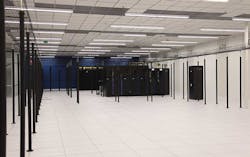“It’s the Experience, Stupid” — How User Experience Impacts Success
Phillip Marangella, CMO for EdgeConneX explores how user experience can make or break a company in the data center industry and beyond. Edge data centers may serve as a solution for to achieve the speed, power and availability necessary to serve today’s clients.
PHILLIP MARANGELLA, EdgeConneX
You probably remember well the accidental presidential campaign slogan “It’s the economy, stupid.” Yes, there were many issues to be debated back in 1992, but the number one issue – the one that would ultimately decide the election – was the economy. Similarly, when it comes to a company’s success, it’s really all about the user experience. It’s the user experience that determines whether a product is great or not. No matter how good a technology might be, if the user experience falters for some reason, then customers will vote by spending their dollars elsewhere.
And unlike a once-every-four-years election, customers vote every time they open their wallets; loyalty extends only as far as great user experience continues. Users’ expectations evolve, and it doesn’t take long before the kind of experience we had considered revolutionary becomes revolt-inducing. IBM (the hardware-turned-software-turned-services company that has survived for more than a century by disrupting itself) put it well: “It’s all about the customer, whether they’re outside your walls or the department next door. Make no mistake, their expectations grow higher every day. If they have a bad experience, or are left waiting for your bells and whistles, and your competitor delivers first, they aren’t coming back.”
That has always been true, of course. What has changed is the pace at which user expectations evolve. It took well over 60 years for less than half of people in advanced economies to adopt the revolutionary technology we call the telephone. But only 10 years for the same percentage to adopt the smartphone. Now, 76% of people in advanced economies own a smartphone. Smartphone adoption in emerging economies is lower (45%), but it’s rising even faster.
A “better user experience” means three things: speed, power and availability.
For providers of technology services – whether you’re in network and mobile, content and digital media, gaming, emerging tech, IT services, cloud – it’s not enough to do well what worked five years ago. Just ask Blockbuster (or Borders, or any of the legacy companies outpaced by Salesforce.com). Now, your competitive edge is determined by the extent to which you can deliver a better user experience, more cost efficiently than your competitors – and keep doing it, every day.
Delivering the Best User Experience Requires Speed, Power and Availability
A “better user experience” means three things: speed, power and availability. When it comes to latency, slow is indeed the new down. Even the slightest delay can turn users away forever. As more applications rely on compute-intensive technologies like machine learning and AI, power becomes an important determinant of user experience. And while slow might be the new down, down is still down, and users don’t care why. (Backhoe cut into your fiber? Demand was 50x expectations? Not your users’ problems.)
How to Deliver on Speed
When 451 Research asked streaming video users about the reasons they might ditch a content provider, the top complaint was too many ads, followed closely by buffering. Yet delivering on users’ speed expectations is becoming increasingly difficult and costly. User demand is increasing everywhere, yet the concentration of data centers in a relatively small number of geographies means most users are outside of low latency range.
The team at EdgeConneX actually did the data analysis. We plotted on a world map all of the cities with populations above 1 million, then we overlaid the top 38 data center markets as ranked this year by Cushman & Wakefield. Populations outside of low latency range of the nearest data center are colored red. There’s a lot of red in this map:
Source: Are You a Netflix or a Blockbuster? (Infographic)
The EdgeConneX approach to the edge enables our clients to get geographic proximity to their users and also minimize network inefficiencies through SDN-based connections and direct cloud connections, which have proven to reduce latency by as much as 87%. In addition to enabling speed, the edge model cuts costs by minimizing cloud offload.
How to Deliver on Power
Rich Miller wrote about the hardware arms race driven by AI, which is creating an ‘insatiable’ demand for power-efficient computing hardware. Here again, it’s about the experience, stupid. The rise in demand for compute-intensive technologies is driven by users’ voracious appetites for the applications those technologies power, from the latest video games and virtual reality to IoT and autonomous vehicles.
A traditional data center with power density of 5-10 kW per rack can’t efficiently support these technologies, which require 25-40 kW per rack. So, where the need for low latency and power density combine, the solution is an Edge data center that can support up to 40 kW per rack on a standard footprint with standard containment solutions.
How to Deliver on Availability
Users’ rising intolerance for slowness hasn’t changed the fact that being down is still a death knell for many applications. Whoever said you can’t have too much of a good thing apparently hasn’t ever experienced an application launch that wildly outpaced expectations. Talking about the launch of Pokemon GO, Niantic CTO Phil Keslin said it was a “hair on fire” experience. The company had contingency plans for demand 2x expectations. Actual demand was 50x. Niantic recovered, but that’s not always the case.
Earlier this year, when hundreds of millions of students and employees started studying and working from home, demand on networks and on applications like Zoom skyrocketed. Traffic on the Amsterdam IX topped 8 terabits per second, and peak daily Zoom meeting participants rose 1900%.
So, not only do technology providers have to be in geographic proximity to end users, and support high power densities, but also be able to scale rapidly. Cloud is great for burst capacity, but for most companies it’s not a cost effective long-term solution; that requires an edge provider with existing capacity and a proven track-record of delivering net new capacity.
Get Your Edge
User experience is often driven by technical and infrastructure decisions that are invisible to the end user yet nevertheless crucial to the success of the product or service. Users care about the end result. So, your business must care about the best tools and the best path for driving that result.
Delivering the best user experience and doing it cost efficiently is the No. 1 key to gaining and keeping an edge over your competitors. Yet the current architecture of the internet and traditional data center model make delivering on speed, power, and availability very difficult. It will only get worse as user bases in emerging markets, demand for power-intensive applications, and network traffic all grow. A new architecture and data center model – a combination of distributed edge and core data centers with innovative connectivity solutions, high-density power, and scalability – can enable you to deliver the best experience for your users.
You work hard to ensure your service is as fast, powerful, and available as your users demand. That’s your competitive edge. Empower it with a data center partner that can deliver high proximity and connectivity, high power, at any scale anywhere.
Phillip Marangella is CMO for EdgeConneX.
Check out the new eBook, User Experience Is Everything.


